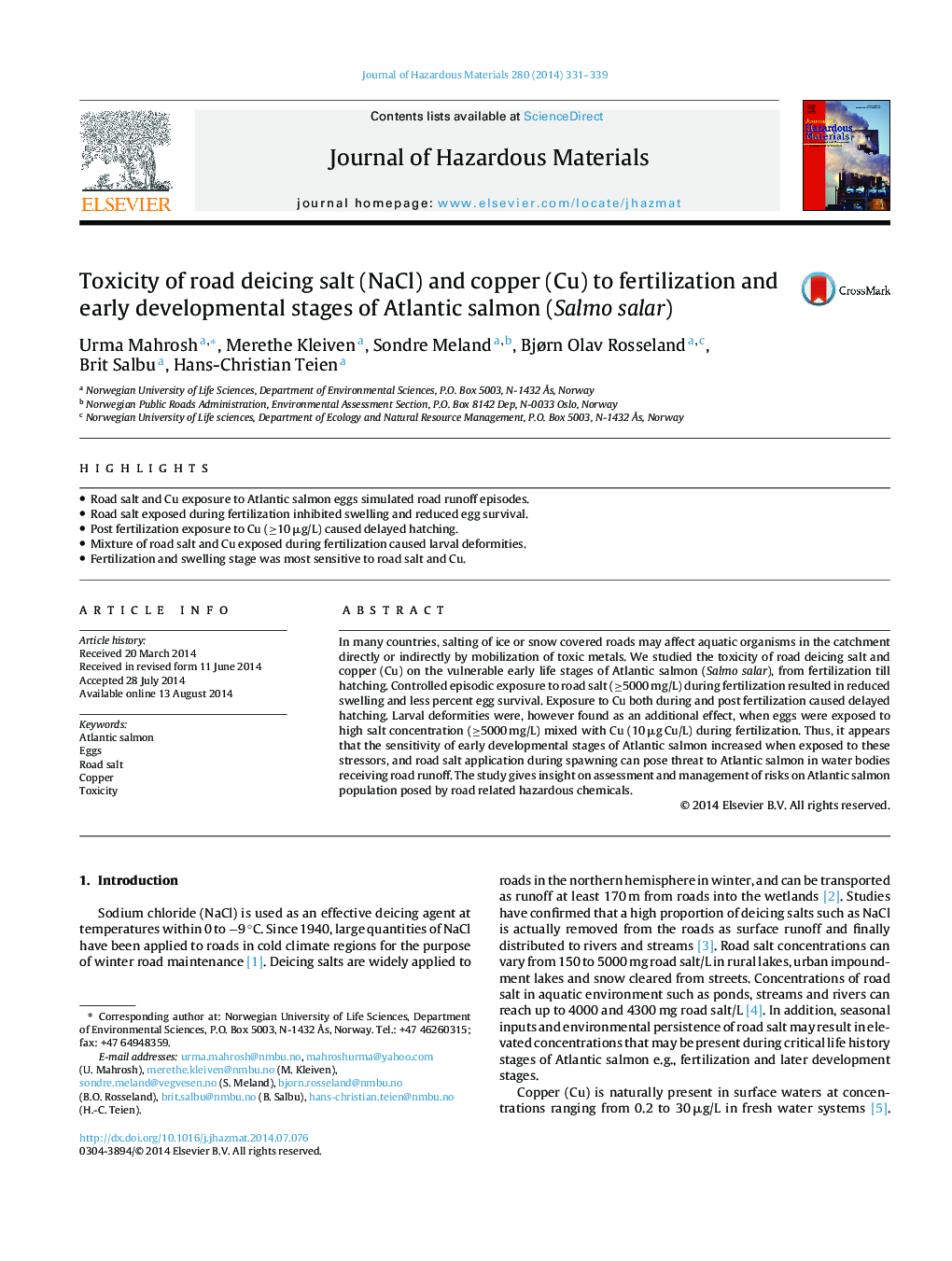| Article ID | Journal | Published Year | Pages | File Type |
|---|---|---|---|---|
| 6971431 | Journal of Hazardous Materials | 2014 | 9 Pages |
Abstract
In many countries, salting of ice or snow covered roads may affect aquatic organisms in the catchment directly or indirectly by mobilization of toxic metals. We studied the toxicity of road deicing salt and copper (Cu) on the vulnerable early life stages of Atlantic salmon (Salmo salar), from fertilization till hatching. Controlled episodic exposure to road salt (â¥5000 mg/L) during fertilization resulted in reduced swelling and less percent egg survival. Exposure to Cu both during and post fertilization caused delayed hatching. Larval deformities were, however found as an additional effect, when eggs were exposed to high salt concentration (â¥5000 mg/L) mixed with Cu (10 μg Cu/L) during fertilization. Thus, it appears that the sensitivity of early developmental stages of Atlantic salmon increased when exposed to these stressors, and road salt application during spawning can pose threat to Atlantic salmon in water bodies receiving road runoff. The study gives insight on assessment and management of risks on Atlantic salmon population posed by road related hazardous chemicals.
Related Topics
Physical Sciences and Engineering
Chemical Engineering
Chemical Health and Safety
Authors
Urma Mahrosh, Merethe Kleiven, Sondre Meland, Bjørn Olav Rosseland, Brit Salbu, Hans-Christian Teien,
